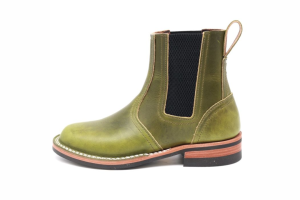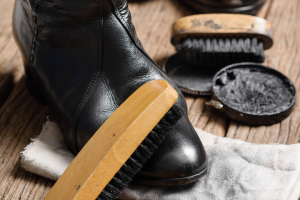Plantar Fasciitis Boots: A World of Benefits
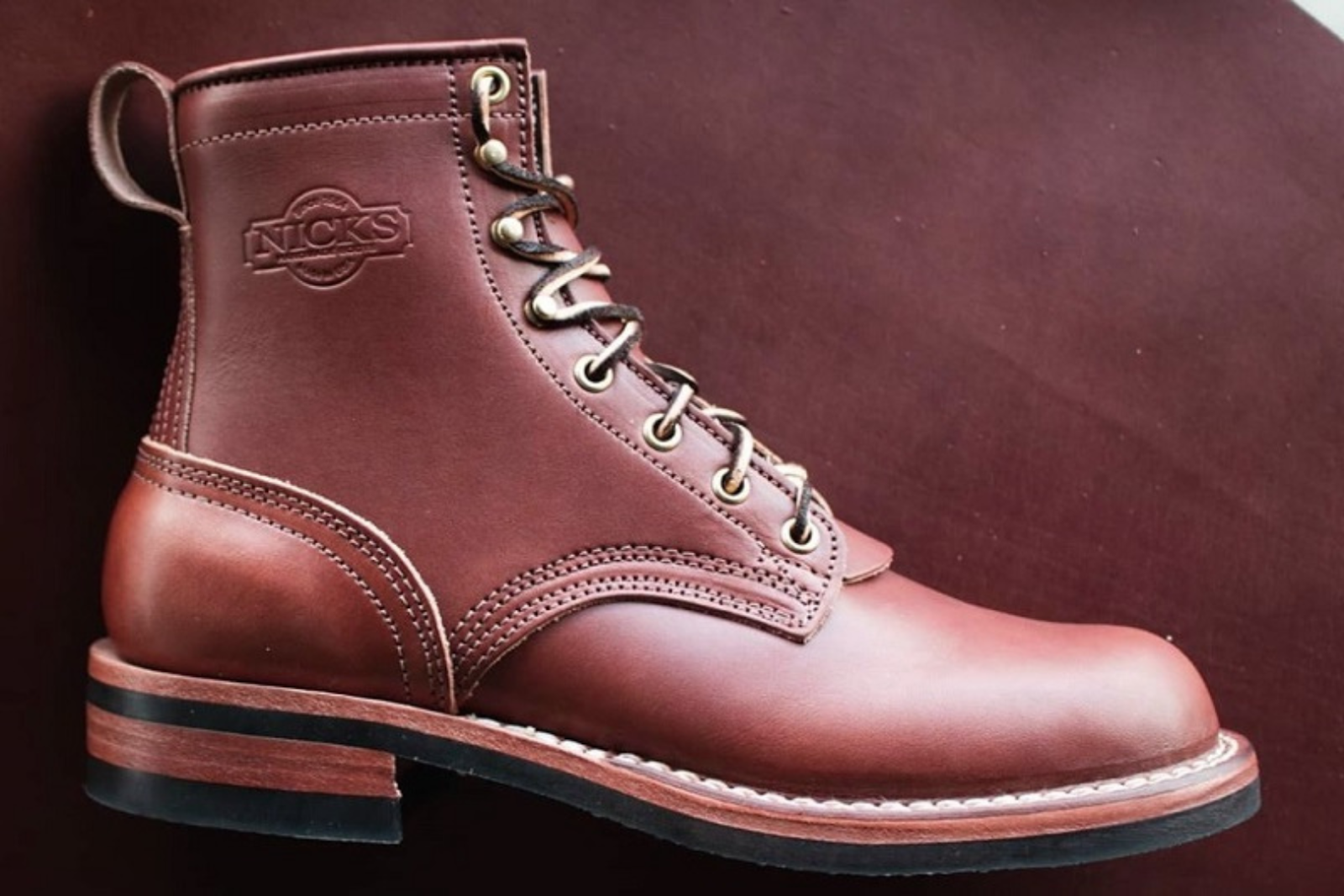
To keep up with the demands of daily life, our feet are often put through a lot of strain and stress. Whether standing for extended periods in the workplace, pounding the pavement for an intense exercise session, or running errands all over town, our feet take the brunt of it all.
Unfortunately, over time, this can lead to the development of a condition known as plantar fasciitis (the inflammation of the plantar fascia). This painful condition accounts for an estimated 11-15% of all foot complaints.(1)
Good news, though! You don't have to be one of the 2 million Americans treated for this condition every year (2) - you can suppress this condition by getting yourself a pair of plantar fasciitis boots!
To help answer any questions you may have about this treatment option, we've put together this article that covers the following topics:
- What is plantar fasciitis?
- What causes plantar fasciitis?
- Nonsurgical treatment for plantar fasciitis
- Benefits of plantar fasciitis boots
By the end, you'll have all the knowledge you need to make an educated decision on your journey to recovering from plantar fasciitis.
What Is Plantar Fasciitis?
As the name suggests, plantar fasciitis is a common foot condition that causes the plantar fascia (a thick tissue on the bottom of the foot that connects the heel bone to the toes) to be inflamed.
Several factors cause the inflammation, and common symptoms include sharp pain in the heel (especially when taking your first few steps after periods of rest), swelling around the heel, and a tight Achilles heel cord.(3)
According to research, this condition is more prevalent in women than men, with young to middle-aged adults at a lower risk of developing it than older people.(4)
If left untreated, plantar fasciitis can lead to rupture of the plantar fascia, fat pad necrosis, and even flattening of the arch.(3)
What Causes Plantar Fasciitis?
While plantar fasciitis generally occurs due to a degenerative process of the plantar fascia at its calcaneal attachment,(5) a number of factors can contribute to its development.
Let's explore a few of these possible causes:
Tight Achilles Tendons
Also known as the heel cord, the Achilles tendon is the largest tendon in the human body. It is located at the back of the leg and links the heel bone and the calf muscles.
Intense muscle contraction and passive stretching of tight Achilles tendons put extra strain on the plantar fascia, leading to inflammation and pain.(6)
Tightness is usually experienced as a result of overuse, improper stretching, or even wearing footwear that does not provide proper arch support or flexibility.
Swelling Around The Heel
Overuse of the heel or ankle area, a sudden increase in physical activity, improper warming up before exercising, and conditions like arthritis are all factors that can cause swelling around the heel.
When the heel swells, it puts additional pressure on the plantar fascia, increasing the risk of inflammation and plantar fasciitis.
Therefore, it's important to treat the swelling promptly to prevent further damage to the plantar fascia. You can treat swelling around the heel by applying cold compresses to the affected area and/or taking anti-inflammatory medications.
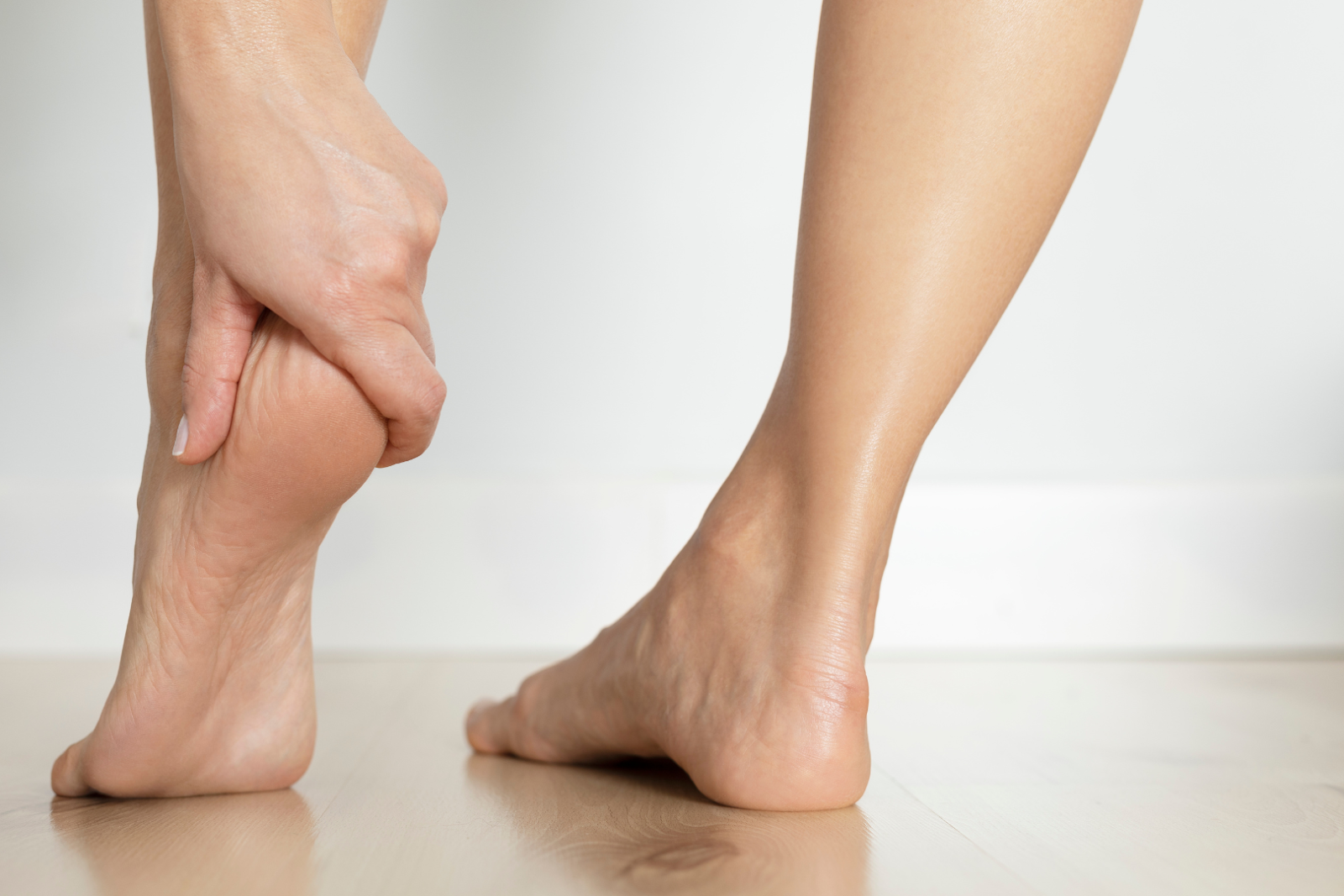

Exercising Without Stretching
Stretching helps keep muscles flexible, strong, and healthy. Without it, the muscles shorten and become tight.(6)
Therefore, exerting excessive force on the plantar fascia during exercise without proper stretching can result in micro-tears and inflammation, contributing to the development of plantar fasciitis.
Obesity
According to the Centers for Disease Control and Prevention (CDC), obesity refers to a weight that is higher than what is considered healthy, based on the height of an individual.(7)
The excess weight puts added pressure on the feet, including the plantar fascia, which can contribute to the development or worsening of plantar fasciitis.
Several studies have shown a correlation between obesity and plantar fasciitis, with one in particular finding that weight loss can help reduce the symptoms and improve the condition.(8)
Nonsurgical Treatment For Plantar Fasciitis
When it comes to treating plantar fasciitis, you don't have to go under the knife! You can find relief with the following nonsurgical treatments:
Rest
A good way to start your treatment is by giving your feet a rest. "Normal activities" like taking a walk in the park, running errands, or simply standing for long periods can exert pressure on your feet, worsening the symptoms of plantar fasciitis.
By avoiding those activities and getting off your feet, you can give your feet the time they need to heal.
Icing
Research has found that cold constricts blood vessels and decreases circulation to the affected area, effectively reducing swelling and inflammation.(9)
Therefore, by applying an ice pack or cold compress to your heels, you can reduce inflammation and suppress the pain associated with plantar fasciitis.
However, for effective treatment, it is recommended to ice your feet for 15-20 minutes several times a day.
Medications
Medications like Nonsteroidal Anti-Inflammatory Drugs (NSAIDs) and steroids have been found to be effective in treating plantar fasciitis.
In one study, researchers found that patients who took NSAIDs reported significant improvements in their pain.(10)
Another study found that steroid injections had a success rate of 71% in relieving pain.(11)
However, before getting started with these medications, it's important to consult a healthcare professional, as some of these medications can have adverse effects.(12)
Shock Wave Therapy
Shock therapy is a minimally invasive treatment often used to treat injured tendons, ligaments, and other soft tissues. This powerful therapy works by sending pulses of energy to the injured area, stimulating healing.
Studies have found this therapy to be especially effective in treating chronic plantar fasciitis.(13)
Stretching Exercises
Several stretching exercises can be performed to reduce the tension in the plantar fascia and improve its flexibility. Here are some stretches you can do to help with plantar fasciitis:
Calf Stretch
Stand facing a wall and place your hands on it for support. Place one foot behind the other, both feet pointing straight ahead. Then bend your back leg and keep your front leg straight. Keep both feet flat on the floor and hold this position for 30 seconds. Do three sets of this stretch with each foot.
Achilles Tendon Stretch
While standing, place your hands on the wall or a chair, and ensure they are at eye level. Stretch one leg behind you and keep it straight. Bend your other knee toward the wall, and press the heel of your back foot into the ground. Hold this position for 30 seconds and repeat this three times for each leg.
Plantar Fascia Stretch
While seated, place one foot on top of the opposite thigh. Reach forward and grab your toes with both hands. Pull your toes towards yourself until you feel a stretch in the arch of your foot. Hold this position for 30 seconds and repeat three times with each foot.
Also, you can roll your foot back and forth over a frozen water bottle while seated. This will help increase circulation and reduce tightness in the arch of your foot.
Physical Therapy
Another great treatment option for plantar fasciitis is physical therapy. Physical therapists can help create an individualized program of stretching, strengthening, and other activities to reduce inflammation in the plantar fascia.
Additionally, they can advise on proper footwear and posture correction to help manage the pain.
In a recent study published in the February 2017 issue of JOSPT, researchers determined physical therapy to be a successful treatment option for plantar fasciitis.(14)
What Makes Plantar Fasciitis Boots Different?
As noted earlier, the inflammation of the plantar fascia is aggravated when this ligament is subjected to excessive stress and strain. What sets apart plantar fasciitis boots from other footwear is their unique features, which are tailored to address the specific needs of this condition.
1. Heel Block
As the name implies, this is a high-length solid block-shaped heel with a broad base. This is a prominent feature in plantar fasciitis boots and plays a crucial role in providing support and stability to the foot.
Thanks to the elevated heel, these boots help maintain a natural alignment of the foot and ankle, allowing for proper distribution of weight and reducing strain on the plantar fascia.
2. Thick, Cushioned Soles
Soles are very important when it comes to plantar fasciitis. In fact, one cross-sectional study found that 55.5% of plantar fasciitis patients wore shoes with hard, non-cushioned insoles without built-in arch support.(15)
On the other hand, plantar fasciitis boots feature thick, cushioned soles with a supporting arch structure. These soles provide ample shock absorption, reducing the impact on the plantar fascia during walking or running.
3. Adjustable Straps And Laces
Straps and laces allow you to set the heel into the heel cup, keeping the heel from lifting as you walk or run around. This helps maintain stability and prevents excessive stretching of the plantar fascia.
Additionally, the adjustable straps and laces enable a customized fit, accommodating different foot shapes and sizes while ensuring proper support and comfort.
4. Heel Counter
Ever wondered why some shoes have a stiff material around the back of the heel? That's called a heel counter, and it is an essential feature in plantar fasciitis boots.
This feature cradles the heel and arch and reduces overpronation (a common cause of plantar fasciitis).
Benefits Of Plantar Fasciitis Boots
Plantar fasciitis boots offer a range of benefits that can significantly improve the condition and provide relief for those suffering from plantar fasciitis. Let's explore these benefits in more detail:
Provides Unparalleled Comfort
Unlike other footwear, plantar fasciitis boots are designed to provide unparalleled comfort for individuals with plantar fasciitis.
The combination of a heel block, cushioned sole, adjustable straps, and heel counter ensures a customized fit that supports and stabilizes the foot. This eliminates excessive stress and strain on the plantar fascia, making walking and running more comfortable.
Plus, their upper feature protects the foot from external impacts and provides additional cushioning.
Helps Increase Bloodflow
The arch support that comes with plantar fasciitis boots helps to align the foot properly, which in turn improves blood circulation. Increased blood flow to the affected area can aid in the healing process, reduce inflammation, and alleviate pain associated with plantar fasciitis.(16)
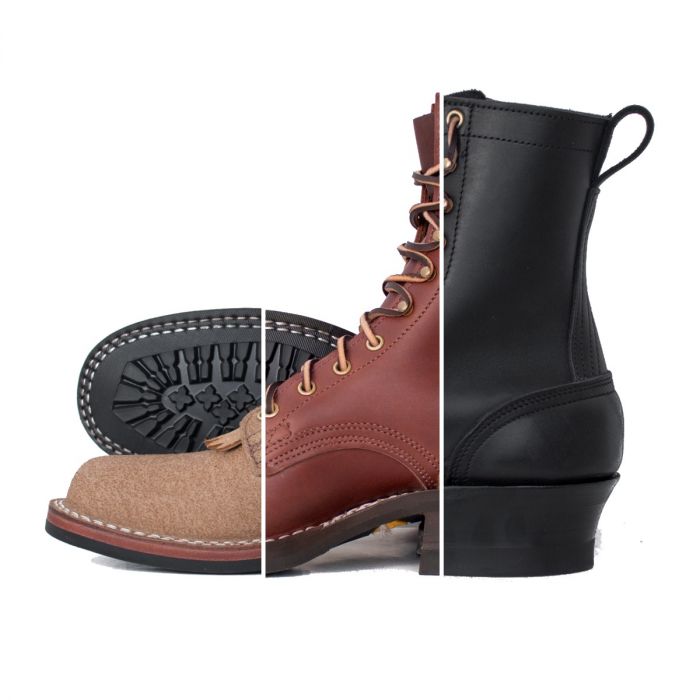

Final Thoughts
Plantar fasciitis is a common and painful condition affecting nearly 2 million Americans yearly.(2) However, it doesn't have to be! By being aware of the causes and taking proactive measures, such as wearing plantar fasciitis boots, you can effectively manage and alleviate the symptoms of this condition.
Looking for a reputable source to purchase your boots? Look no further than Nicks Boots! Check out our wide collection of boots to find the perfect pair for your needs.
Sources:
- Rasenberg, N., Bierma-Zeinstra, S. M., Bindels, P. J., van der Lei, J., & van Middelkoop, M. (2019, October 31). Incidence, prevalence, and management of plantar heel pain: A retrospective cohort study in Dutch Primary Care. The British journal of general practice : the journal of the Royal College of General Practitioners. https://www.ncbi.nlm.nih.gov/pmc/articles/PMC6805165/.
- Schwartz, E. N., & Su, J. (2014). Plantar fasciitis: A concise review. The Permanente journal. https://www.ncbi.nlm.nih.gov/pmc/articles/PMC3951039/.
- Plantar fasciitis - StatPearls - NCBI Bookshelf. (n.d.-b). https://www.ncbi.nlm.nih.gov/books/NBK431073/.
- U.S. Department of Health and Human Services. (n.d.). Analysis of data on the prevalence and pharmacologic treatment of plantar fasciitis pain. National Center for Complementary and Integrative Health. https://www.nccih.nih.gov/research/research-results/analysis-of-data-on-the-prevalence-and-pharmacologic-treatment-of-plantar-fasciitis-pain.
- Author links open overlay panelRavindra Puttaswamaiah a, a, b, AbstractPlantar fasciitis is a common cause for heel pain and is the result of a degenerative process of the plantar fascia at its calcaneal attachment. Age, Blanco, C. E., Gefen, A., Brugh, A. M., Anderson, D. J., Ogilvie-Harris, D. J., Williams, S. K., Barrett, S. L., Benton-Weil, W., Dasgupta, B., Mehra, A., Micke, O., Saxelby, J., Seligman, D. A., Speed, C. A., Akfirat, M., … Ozdemir, H. (2007, February 15). Degenerative plantar fasciitis: A review of current concepts. The Foot. https://www.sciencedirect.com/science/article/abs/pii/S0958259206000861.
- KN;, C. J. M. (n.d.). Effect of achilles tendon loading on plantar fascia tension in the standing foot. Clinical biomechanics (Bristol, Avon). https://pubmed.ncbi.nlm.nih.gov/16288943/#:~:text=Interpretation%3A%20Increasing%20tension%20on%20the,overstraining%20of%20the%20plantar%20fascia.
- Centers for Disease Control and Prevention. (2022, June 3). Defining adult overweight & obesity. Centers for Disease Control and Prevention. https://www.cdc.gov/obesity/basics/adult-defining.html.
- Boules M;Batayyah E;Froylich D;Zelisko A;O'Rourke C;Brethauer S;El-Hayek K;Boike A;Strong AT;Kroh M; (n.d.). Effect of surgical weight loss on plantar fasciitis and health-care use. Journal of the American Podiatric Medical Association. https://pubmed.ncbi.nlm.nih.gov/29617149/.
- PM;, S. J. N. (n.d.). Effect of cold on the Blood Vessel Wall. General pharmacology. https://pubmed.ncbi.nlm.nih.gov/6131011/.
- Donley BG;Moore T;Sferra J;Gozdanovic J;Smith R; (n.d.). The efficacy of oral nonsteroidal anti-inflammatory medication (NSAID) in the treatment of plantar fasciitis: A randomized, prospective, placebo-controlled study. Foot & ankle international. https://pubmed.ncbi.nlm.nih.gov/17257533/.
- Plantar fasciitis. the painful heel syndrome. JBJS. (n.d.). https://www.jbjs.org/reader.php?id=85296&rsuite_id=408028&native=1&source=The_Journal_of_Bone_and_Joint_Surgery%2F57%2F5%2F672%2Fabstract&topics=fa%2Bpm#info.
- Davis, A., & Robson, J. (2016, April). The dangers of nsaids: Look both ways. The British journal of general practice : the journal of the Royal College of General Practitioners. https://www.ncbi.nlm.nih.gov/pmc/articles/PMC4809680/.
- N;, D. (n.d.). Extracorporeal shock wave therapy for treatment of Plantar fasciitis. JPMA. The Journal of the Pakistan Medical Association. https://pubmed.ncbi.nlm.nih.gov/25252488/.
- Plantar fasciitis: Will physical therapy help my foot pain? - jospt. (n.d.-d). https://www.jospt.org/doi/10.2519/jospt.2017.0501.
- Umar, H., Idrees, W., Umar, W., Khalil, A., & Rizvi, Z. A. (2022, July). Impact of routine footwear on Foot Health: A study on Plantar fasciitis. Journal of family medicine and primary care. https://www.ncbi.nlm.nih.gov/pmc/articles/PMC9648311/.
- JD;, W. (n.d.). The influence of tissue oxygen and perfusion on wound healing. AACN clinical issues in critical care nursing. https://pubmed.ncbi.nlm.nih.gov/2223323/.
FAQs
How long does it take to recover from plantar fasciitis?
The amount of time it takes to recover from plantar fasciitis varies from person to person. But generally, it can take anywhere from a few weeks to several months to experience relief from symptoms.
Does an ice bath help plantar fasciitis?
Yes, an ice bath can help with plantar fasciitis. Cold reduces pain, swelling, and inflammation.(9) Therefore, an ice bath is a perfect remedy for relieving plantar fasciitis symptoms.
When should I see my healthcare provider?
If your heel pain coincides with a fever, numbness, or tingling, seek medical care as soon as possible.
What's the difference between plantar fasciitis and heel spurs?
Plantar fasciitis is commonly caused by overuse or damage to the plantar fascia tendon, leading to stiffness and inflammation.
On the other hand, heel spurs are a result of bruising or damage to the heel bone, causing a calcium deposit to form past the edge of the bone.
What are the potential complications of plantar fasciitis?
If left untreated, plantar fasciitis can lead to the rupture of the plantar fascia, fat pad necrosis, and flattening of the arch (which increases strain).(3)
What boots should you not wear with plantar fasciitis?
It is best to avoid wearing tight boots with hard, non-cushioned insoles which lack built-in arch support. Such boots can exacerbate the symptoms of plantar fasciitis and increase discomfort.(15)
